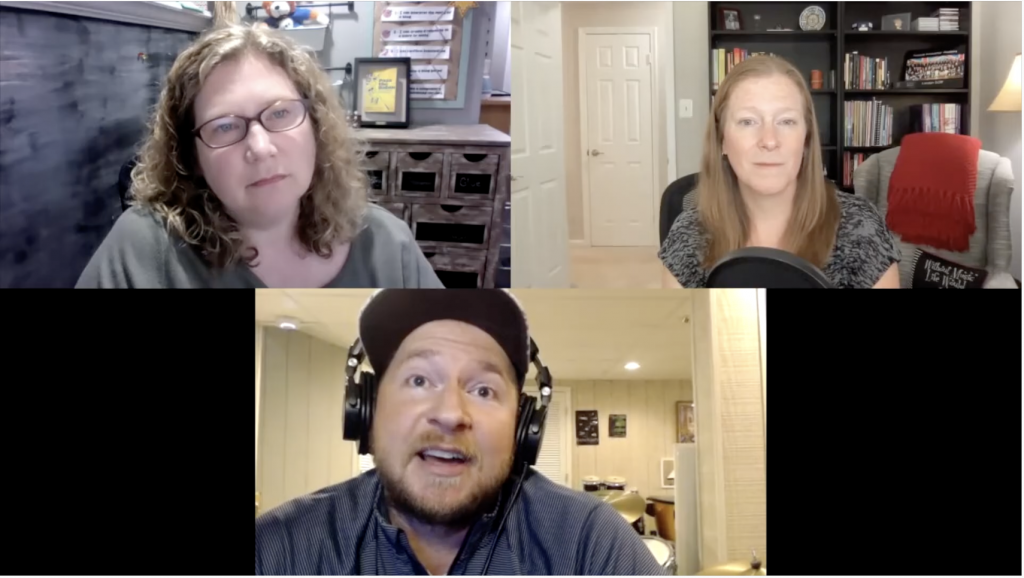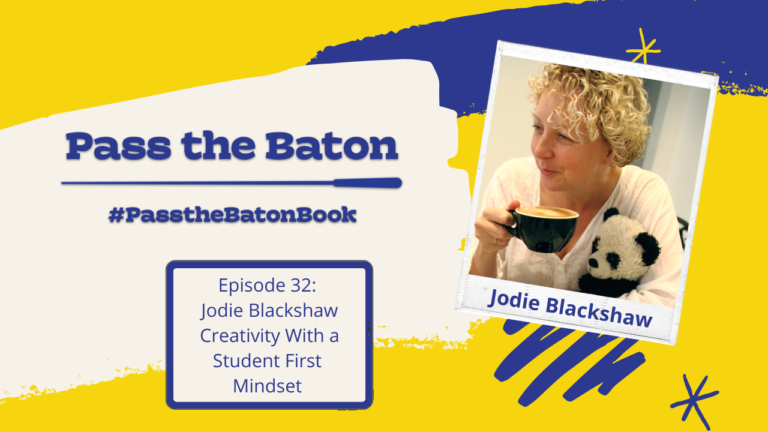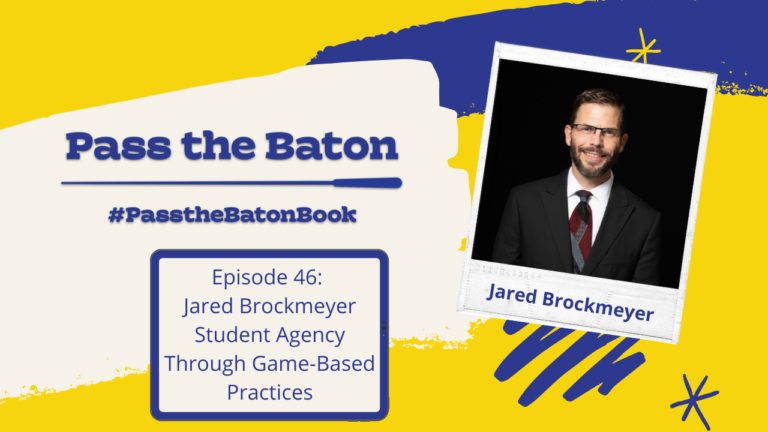This interview continues a three-part series about creativity through music composition. Robby Burns is a middle school band and general music teacher in Howard County, Maryland. Additionally, Robby directs the middle school honor band, teaches private percussion lessons, and works as a freelance percussionist. He is the host of the podcast, Music Ed Tech Talk, and frequently presents at conferences and creates online resources for music educators. In this interview, Robby talks about how he incorporates creativity and music composition in his middle school band classes.

Going into the 2020-2021 school year, Robby knew his school would be fully virtual for the beginning of the year. He wanted to give students a band experience similar to what they were used to, within the limitations of the virtual model, but also work off the strengths of that model, looking at things he has wanted to do in the past but didn’t have the opportunity to explore. Students played their instruments as much as possible during class time, students played warm-ups, Robby created play-alongs and also used professionally recorded practice tracks. He also decided it was time to incorporate a larger-scale music composition project. Doing this required not only teaching students about composition techniques but also how to use a music notation program!
“Putting the E- in E-nsemble”
Putting the E- in E-nsemble was created by Alex Shapiro to help students explore their creativity during virtual learning. There were several ways to approach the project, which gave Robby the flexibility to adapt it to meet the needs of his students. The first step was for students to each create a melody no longer than 8 measures long. Robby’s students used Noteflight for this. Students then created an ostinato pattern as well. The next step was for students to record themselves playing the melody they wrote. Using Soundtrap, the students recorded their melody to a click track to ensure that all melodic material was the same tempo. Students exported their recordings as MP3s and shared them with Robby. He compiled all MP3s into a folder that all students could access.
For the final product, students used Soundtrap to arrange the musical components recorded by their classmates. Students could edit, splice, autotune, and loop the musical snippets, or add their own beats if they would like. Alex Shapiro also provided an ethereal drone students could use along with their compositions. Through editing and arranging, students end up with a 2-minute piece of music.
How It Impacted Students
As with anything new, not every student loved composing! But it was a part of their creativity that was previously untapped. Many students really took to composition. Robby found he gets a different perspective on what students hear in their inner ear when they start composing. For example, if a student creates something that is form-less, it may be an indication that they don’t understand musical form. In other students, you begin to hear musical ideas that may have been in their heads all along, but they were never given the platform or the tools to express them. Robby found he could differentiate for the varying student needs by offering ways for students to do more with the project, going beyond the basic level of creativity.
Robby will definitely do this project again in the future. One reason being, he already has all the templates and instructions created! But more importantly, music composition is important to a student’s musicianship. When students learn how a piece of music is put together, they become aware of all important things during a band rehearsal. They think about how their parts fit with the other parts, gaining an understanding of the forest, not just the trees, while understanding the details at a higher level. Robby’s belief is that knowing about this part of the musical process will help students when they transition back into the band room.
These kids, once they’re learning how a piece is put together, they’re becoming more aware of all the things you want them to be aware of in a band rehearsal.

Robby’s Advice to Teachers
Robby recommends teachers are flexible when approaching a project like this. If teachers choose to try Putting the E- in E-nsemble, he reminds us that even the composer, Alex Shapiro, recognizes that teachers will need to adapt the project to work for their students. Robby also suggests taking baby steps. Even if you only enter melodies in Noteflight, it’s still a step in the right direction. It takes time and practice. Doing any amount of music composition, or work in creativity, is better than doing none of it.
To learn more about Robby’s process for incorporating music composition, check out the full interview here: Creativity Through Music Composition (Part 2 of 3).
Part 1: Creativity Through Music Composition with Sonya Knussen
Connect with Robby:
- Twitter: @RobbyBurns
- Website: www.robbyburns.com
- Music Ed Tech Talk
- Robby Burns: Store
- Digital Organization Tips for Music Teachers
- Music Ed Tech Talk Podcast
- Robby Burns: YouTube

